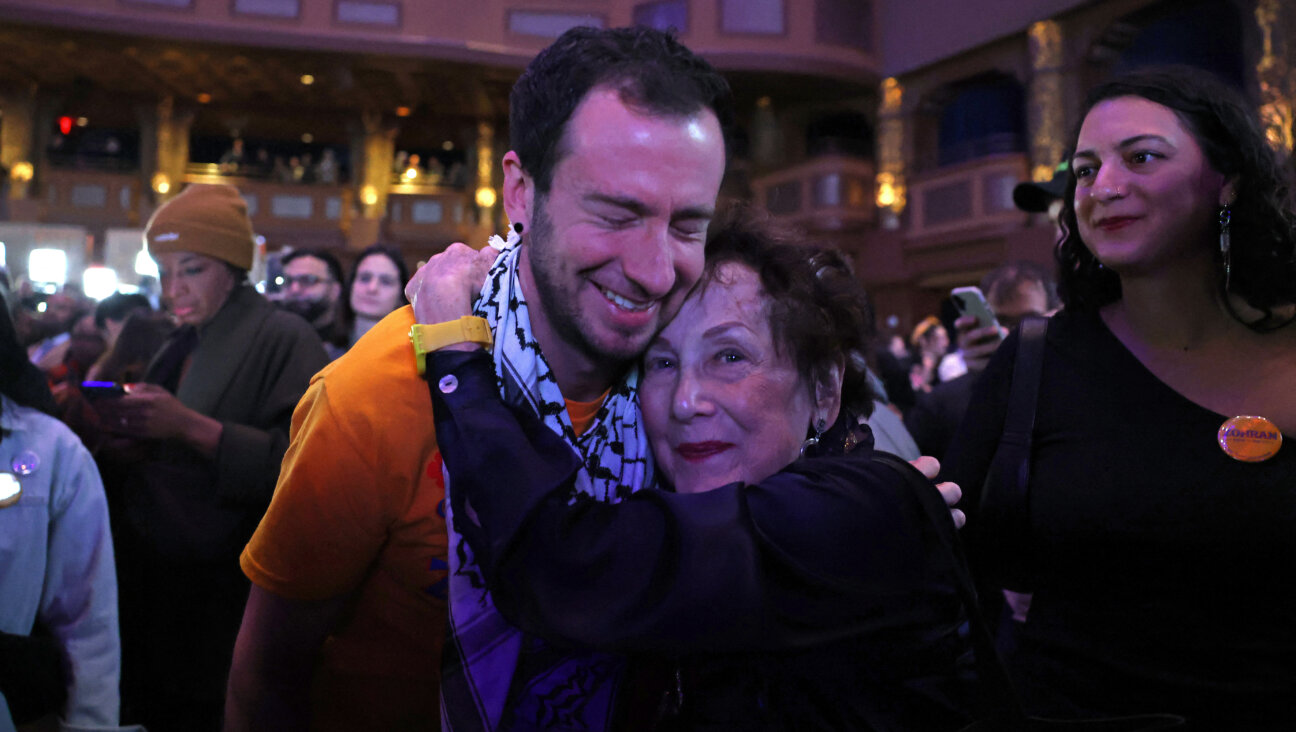Israel Says It Found Hamas Training Manual in Gaza

Image by Getty Images
The Israeli army has released what it says is a page from a seized Hamas training manual that would appear to support its case that Palestinian militants deliberately use the cover of residential areas for combat operations.
Hamas, which denies it puts civilians at risk by storing and firing weapons from built-up areas, dismissed the document as a forgery intended to justify Israeli attacks that have killed hundreds of children, women and other non-combatants.
Israel has been criticized by the United Nations and others for its tactics during the war, including the shelling of densely populated areas and attacks on several U.N. schools, which Israel says militants were using for cover.
While many legal experts say Hamas is operating outside of international law by firing rockets indiscriminately at Israeli towns and cities from built-up areas in the Gaza Strip, they stress that does not absolve Israel of responsibility to comply with the laws of war itself, notably on endangering civilians.
The Israeli army said the training manual was found in the northern Gaza town of Beit Hanoun at the end of July, when troops were operating inside the enclave. The full manual is 102 pages long, the army said, but it released just one page of it.
That page appears to set out guidelines on how to hide weapons and ammunition in civilian areas, how to transport them into buildings and how to conceal or camouflage explosives.
It is marked at the bottom with “Izz-el-Din al-Qassam Brigades, Training and Guidance Branch, Engineering Corps”. The al-Qassam Brigades are the military wing of Hamas, the Islamist group that has controlled Gaza since 2007. Unlike other Hamas documents, the page bears no Hamas logo.
“The process of hiding ammunition inside buildings is intended for ambushes in residential areas and to move the campaign from open areas into built up and closed areas,” reads the document, written in Arabic.
“Residents of the area should be used to bring in the equipment,” it continues, adding: “For jihad fighters, it is easy to operate inside buildings and take advantage of this to avoid (Israeli) spy planes and attack drones.”
The guidelines also explain that “the action of hiding weapons inside a building must be carried out secretly and shouldn’t have a military character”.
An Israeli army spokesman would provide no further details about the document, only to say that the army was “extremely confident it is a Hamas training manual”.
Hamas spokesman Sami Abu Zuhri said: “This is a fabricated paper and neither Hamas nor Qassam has anything to do with it.”
He added: “Israel circulating this is aimed at justifying the mass killings of Palestinian civilians and massacres committed by the occupation army.”
NARRATIVE OF WAR
While it may be impossible to verify whether it is a genuine Hamas manual, the Israeli military’s decision to release it underscores the efforts both sides in the conflict are making to justify their actions and support their narrative of events in a war that has drawn international condemnation of each party.
Israel launched its offensive on Gaza on July 8 in response to intense Hamas rocket fire from the narrow coastal enclave. In the seven weeks of conflict since, 2,110 Palestinians, most of them civilians, have been killed, while 64 Israel soldiers and 4 civilians in Israel have also died.
In an interview with Yahoo News last week, Khaled Meshaal, the exile political leader of Hamas, denied that the group fired its rockets indiscriminately at Israel, saying it tried to aim the low-tech munitions at military installations or army bases.
There is little evidence that that is the case – nearly all the 2,500-3,000 rockets and mortars Hamas has fired at Israel since the start of the war seem to have been aimed at towns. On Friday, one hit a synagogue and another killed a four-year-old boy in a kibbutz collective farm close to the Gaza border.
Israel has frequently accused Hamas fighters of taking cover among civilians and operating from residential areas, but it has not always been able to present clear evidence of that.
Some journalists in Gaza during the war captured video footage of rockets being fired from built-up areas, including around Shifa, Gaza’s main hospital. Hamas has sought to dismiss those as isolated, one-off incidents or attacks carried out by rogue groups not under its control.
For its part, Israel drops leaflets on residential areas before any attack and makes phone calls to residents telling them to leave the area. On Saturday, the Israeli air force warned residents to leave a 13-story apartment building before it was destroyed in an air strike. Israel said the building was a Hamas base. No one was killed, 17 were wounded.
The U.N. human rights council has already appointed a commission to look into the Gaza war, and other investigations will no doubt be conducted once the conflict is over.
Bill Schabas, the head of the U.N. commission, emphasized that even if one side in a conflict is operating outside of international law, that does not relieve the other side of responsibility to act within the law.
“There are some very fundamental obligations in international humanitarian law that have to be respected regardless of whether the other side respects them,” he told Reuters last week.
“In short, it’s not a defense to a war crime to say that the other side was committing a war crime.”















